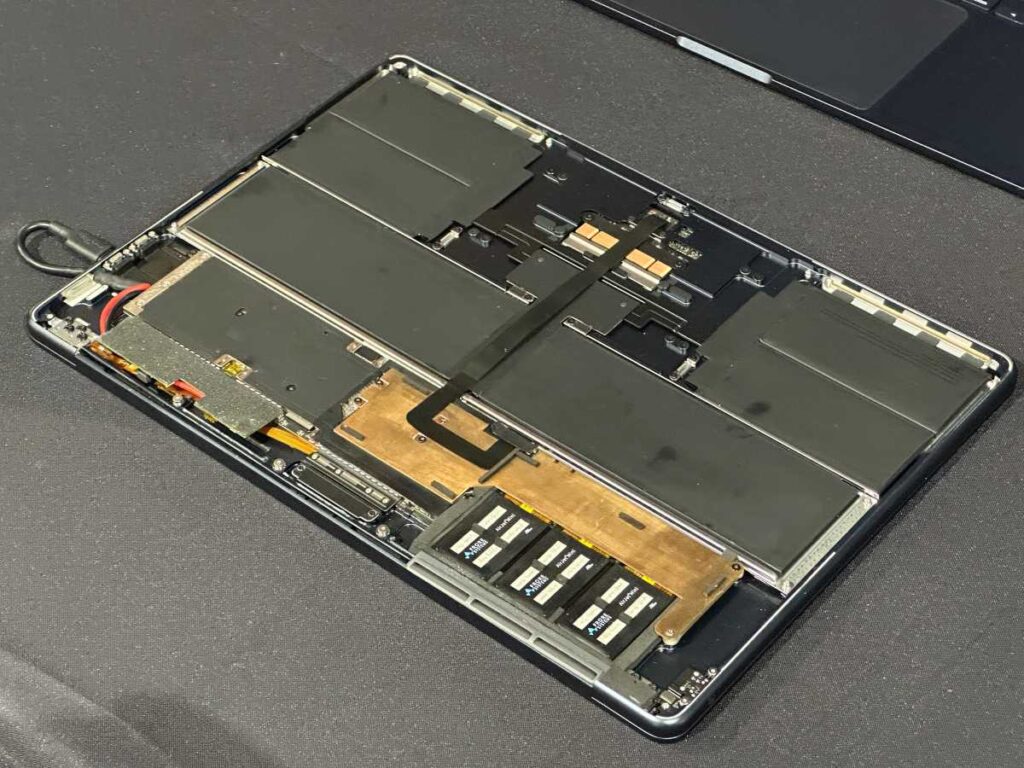AirJet makes a MacBook Air perform like a MacBook Pro

Most Macs use fans to help the System on a Chip maintain an optimal operating temperature. These fans are bulky and noisy, but Frore Systems has developed a new cooling system called AirJet that’s super thin–thin enough to fit in a current MacBook Air and boost its performance while under heavy load.
Since the MacBook Air doesn’t have a fan for the SoC, its performance will throttle down during processor-intensive work to maintain a proper operating temperature. The M2 13-inch MacBook Pro, on the other hand, has a fan that expels excessive heat so the chip can keep chugging along.
The AirJet is what Frore calls a “solid-state active cooling chip” that measures 27.5 by 41.5 by 2.8 mm, a lot smaller and thinner than a typical computer fan. It’s so thin that Frore was able to take an M2 MacBook Air and fit a set of AirJet chips inside the laptop. AirJet can keep the MacBook Air temperature at a proper level so the chip doesn’t have to throttle down. Using the Cinebench R23 benchmark, an off-the-shelf M2 MacBook Air was 7 percent slower than the M2 MacBook Pro. But the modified M2 MacBook Air with an AirJet setup matched the Cinebench score of the MacBook Pro. The video below by our sister site, PCWorld, explains how it works.
How is AirJet able to be so thin? The company has a blog post that goes into greater detail on how AirJet works, but essentially, inside it are several different materials used to vibrate membranes. This creates back pressure to pull in air through intakes on the case of the device, such as a laptop. While heat is being moved from the chip to a fin stack, the air is then used by AirJet to expel the heat out of a vent. In the MacBook Air demonstration, Frore added intake vents near the hinge and used the speaker holes as exhaust.
AirJet isn’t a consumer product–consumers can’t buy it and modify their own MacBook Air, nor does Frore plan to create a kit for consumer sale. Frore’s MacBook Air demo is a proof of concept that it can be beneficial in a MacBook. Its thin form factor could open up possibilities with Apple products; for example, if Apple were to use AirJet instead of the fans it uses in the 14- and 16-inch MacBook Pro, it could free up space that the company can use for, say, a bigger battery. Another example is with the Mac Studio, which, as you can see in iFixit’s Mac Studio teardown, has a gigantic heat sink and two large fans–AirJet could allow Apple to create a smaller cooling system, thereby shrinking the Mac Studio.
For more information about AirJet, check out the slideshow below and the links to more coverage by PCWorld:
AirJet teardown: See inside the solid-state cooling revolution
Lab tour! Go inside AirJet’s futuristic solid-state laptop cooling tech
MacBook


